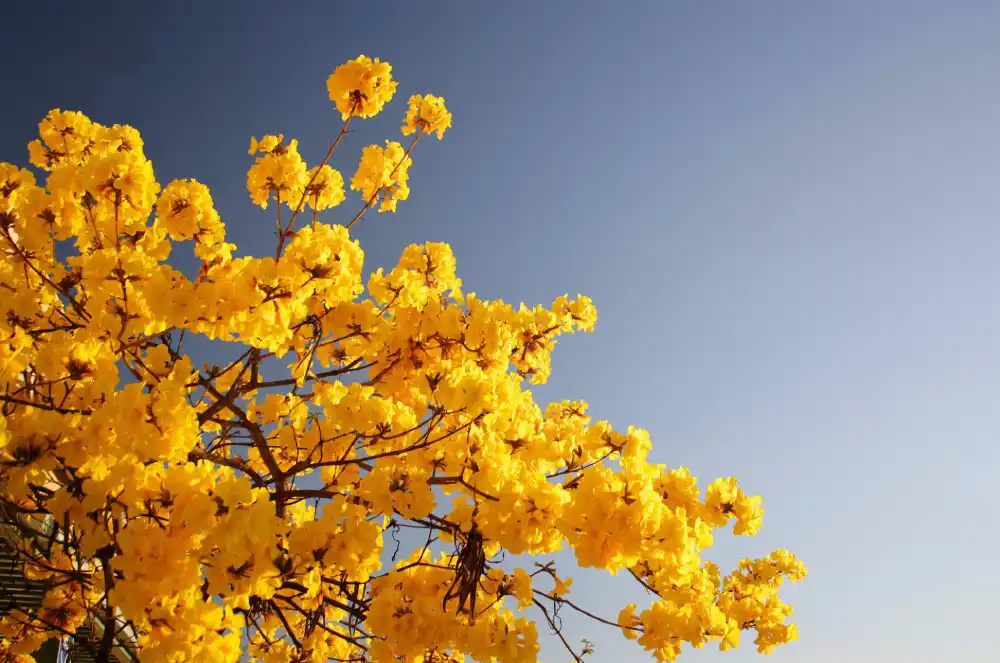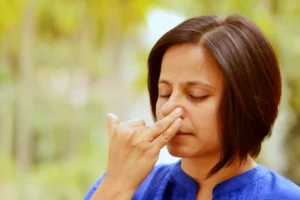
Ayurveda is the art of daily living in harmony with the laws of nature. A science of life and self-healing, Ayurveda aims to create and sustain health by keeping the three doshas – Vata, Pitta, and
Kapha in harmony according to the dynamics of an individual’s unique constitution as well as the
environment. The guidelines for this are in the practices of Dinacharya, Ratricharya and Ritucharya:
regimens for sunrise to sunset, sunset to sunrise, and the seasons.
Recently we all celebrated the auspicious incoming of vasant ritu, the spring season with Vasant
Panchami. In Bhagavad Gita, Shri Krishna says, “Among seasons I am spring, which brings forth
flowers”. Vasant, the spring season is known as ṛitu rāja, or the king of seasons. Spring is a season
marked by the exuberant colors of life in nature. Many festivals like Holi and Baisakhi are celebrated
in this season symbolizing the joyous and vibrant aspect of the season.
Vasant ritucharya, the seasonal regimen in Ayurveda prescribes regulations related to diet,
adjustment of lifestyle, and herbal medicines to manage health during transitions of seasons. Due to
changes in seasons, changes in doshas also take place, which affect our physical health and the mind.
The doshas can get aggravated, accumulated, or reduced depending on seasons; if our diet and
lifestyle are not adjusted to keep the seasonal balance then it can cause an onset of disease.
Vasant, the spring season comes towards the end of winter, bringing warmth and liveliness to the
atmosphere. This is also the time of ritu-sandhi, a climatic transition, that can trigger infections and
ailments like colds, coughs, fever, and allergies.
During spring, Kapha dosha dominates our body. The seat of Kapha, a combination of water and
earth elements is in our stomach and the respiratory system. In spring, Kapha can get aggravated and
accumulate in these areas, whereas Pitta gets reduced.
The three foremost texts of Ayurveda called Brihattrayi – Charaka Samhita, Sushruta Samhita, and
Ashtanga Hridaya, offer guidelines for Vasant ritucharya as:
- In the spring, the mucous accumulated in the winter season melts with the rays of the sun and
destroys jatharagni (digestive fire), causing many diseases. - Kapha-inducing foods that are heavy, oily, and sweet in nature should be avoided as weak
digestive fire will be unable to digest it leading to the accumulation of ama (toxins) in the
body - Avoid daytime sleeping as this can also increase Kapha in the body
- Follow regular exercise to enhance weak Pitta and reduce accumulated Kapha and fat with
sweating
YOGA & LIFESTYLE MODIFICATIONS FOR VASANT RITU:
Cleansing and Massage
- Vamana dhauti, vomiting plain water on an empty stomach helps to clear excess Kapha and
mucous from the body. Should be learned or done under the supervision of a competent
teacher - Bathing with ubatan, a powdered paste made of Bengal gram dal, turmeric, and milk cream
will remove toxins from the pores of the skin, endow glowing and clear skin - Massaging the body with mustard oil will give a warming and stimulating effect and dispel phlegm;
however, this is a more general recommendation and may vary for your specific prakruti and
vikruti, the state of doshic imbalance - Aroma oils such as camphor, patchouli, and pine are strong and sharp fragrances that work
well, to reduce Kapha; can be added to bathing water or used as a room fragrance.
Dietary guidelines
- An anti-Kapha diet is a general rule for spring; avoiding dairy and heavy, oily foods that not
only aggravate Kapha but are also difficult to digest in this season - Adding warm spices such as black pepper, cinnamon, dry ginger, and bay leaf in foods induces
Pitta in the body - Kadha, a herbal Ayurvedic decoction made up of sonth (dry ginger), black pepper, and
cinnamon helps enhance jatharagni, the digestive fire. - Half an hour before meals, having grated and crushed fresh ginger juice will help invoke jatharagni
- Avoid cold items and drinks, sweet, salty, and sour foods that will increase Kapha dosha
Yoga Practice
- Hatha yoga practices that increase warmth and jatharagni in the body will help counter the
the two-sided challenge of spring – low digestive fire and increased Kapha in the body - Shat kriyas as kunjal or vaman dhauti, and kapalbhati are helpful in the elimination of excess
mucous - Agnisara kriya activates the fire center in the navel region and awakens the digestive fire
- Dynamic movements of Surya Namaskar and Sukshma Vyayama help counter the heaviness
of accumulated Kapha - Asanas that activate fire centre – paschimottanasana, uttanapadasana, mayurasana, simha
mudra (lion pose), dhanurasana and dosha balancing asanas such as sarvangasana,
trikonasana, and bhujangasana can be practiced. - Pranayamas to increase warmth and improve doshic balances that can be practiced – nadi
shodhana pranayama, surya bhedana pranayama and bhastrika pranayama - Relaxations and meditation are especially helpful in pacifying aggravations due to the
seasonal transitions
Following ritucharya and adapting our lifestyle to the seasonal shifts of spring can promote our wellbeing, enhance digestion, boost energy levels, and allow us to fully embrace the richness of nature during this glorious season.












